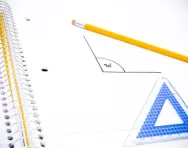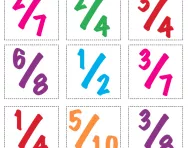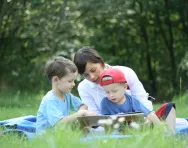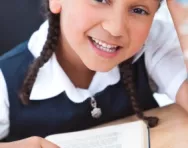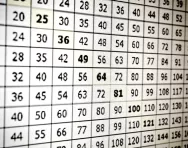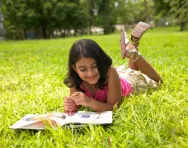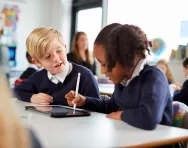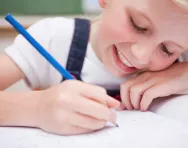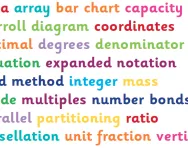Important update from TheSchoolRun
For the past 13 years, TheSchoolRun has been run by a small team of mums working from home, dedicated to providing quality educational resources to primary school parents. Unfortunately, rising supplier costs and falling revenue have made it impossible for us to continue operating, and we’ve had to make the difficult decision to close. The good news: We’ve arranged for another educational provider to take over many of our resources. These will be hosted on a new portal, where the content will be updated and expanded to support your child’s learning.
What this means for subscribers:
- Your subscription is still active, and for now, you can keep using the website as normal — just log in with your usual details to access all our articles and resources*.
- In a few months, all resources will move to the new portal. You’ll continue to have access there until your subscription ends. We’ll send you full details nearer the time.
- As a thank you for your support, we’ll also be sending you 16 primary school eBooks (worth £108.84) to download and keep.
A few changes to be aware of:
- The Learning Journey weekly email has ended, but your child’s plan will still be updated on your dashboard each Monday. Just log in to see the recommended worksheets.
- The 11+ weekly emails have now ended. We sent you all the remaining emails in the series at the end of March — please check your inbox (and spam folder) if you haven’t seen them. You can also follow the full programme here: 11+ Learning Journey.
If you have any questions, please contact us at [email protected]. Thank you for being part of our journey it’s been a privilege to support your family’s learning.
*If you need to reset your password, it will still work as usual. Please check your spam folder if the reset email doesn’t appear in your inbox.
Supporting your Year 3 child's learning at home
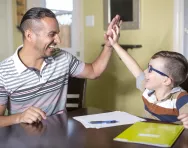
These are seven of the key areas covered in Year 3, and some strategies for how you can reinforce them at home. If you can help your child understand these important topics, they’ll be in a really strong position throughout Year 3 and into Year 4.
Year 3 English key area: punctuation
In school, because of the size of classes, teachers tend to whizz through many forms of punctuation teaching, and children can be left with huge gaps in their knowledge. TheSchoolRun has guides to using all punctuation marks correctly, from full stops to apostrophes and dashes, but in Year 3 the punctuation mark to focus on is the comma.
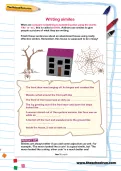
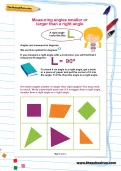
Start the Year 3 Learning Programme!
- Weekly maths & English worksheets direct to your inbox
- Follows the National Curriculum
- Keeps your child's learning on track
Practise using commas; if your child can learn how to use them accurately by the end of Year 3 they’ll be in a really good place. Show them how to use commas in a list, and instead of brackets. For example:
Milk, bread, oranges and tea.
I went to the park, with the dog, to meet Susie.
Have them practise writing sentences with commas, and point them out in books that you’re reading, too.
Whenever there’s a list to be written, ask your child to write it, first with bullet points, then in a sentence with commas to separate items. Try to always keep your learning ‘real’ like this to boost motivation (theirs and yours!).
Year 3 English key area: getting more out of stories
In Year 3, children are taught to identify features (such as specific words and forms of punctuation) that writers use in order to provoke reaction from the reader.
When you read stories together, note any interesting, rich language (referred to in school as "wow words" or "powerful verbs"). Look for punctuation such as exclamation marks. Discuss how the use of punctuation and wonderful vocabulary changes the way we read.
Encourage your child to practise reading with expression, being guided by the punctuation and adding in different voices for different characters if they want! Use familiar stories for this, so it’s less focused on the decoding of the words, and more on the rhythm and pace.
One of the best things you could do for your child during Year 3 is to encourage them to enjoy reading for reading’s sake – so don’t dampen their enthusiasm by analysing every book you read together. Make sure you make time for plenty of reading that’s just for the fun of it.
Year 3 English key area: non-fiction writing
In Year 3 children learn about formats and layouts for writing.
Have a look at some journalistic writing – you'll need to be selective about the news your child is exposed to, but First News is a really good bet for child-friendly news stories to work from. Ask them to look at the titles, the sub-headings and how the paragraphs are structured.
There is a wealth of educational magazines available for children, so you could consider taking out a subscription to offer your child topical reading material delivered through the post.
Encourage your child to write their own newspaper story at home, using the same format and structure of the news stories they read elsewhere. Talk to them about who the reader is, and what they already know. What are the most important things for them to learn?
For example, if they're writing about the coronavirus outbreak of 2020, your child might like to direct their writing at their past self, at a person who has been cut off from the world and is unaware of the situation, or even an alien from another planet! By writing for all three audiences they’ll get a great understanding of how the way facts are described is subject to change, based on the reader.
Year 3 maths key area: estimating
Being able to estimate is a key area of maths throughout primary school. In Year 3, children should be able to check their estimates with more accurate measuring.
If your child is unsure about what an estimate is, explain it as a ‘clever guess’ – i.e. a guess that you’ve given lots of thought to. When estimating, you use what you do know to work out what you don’t (for example, your child might know that their ruler is 30cm long, so be able to estimate that a book that's slightly shorter is 25cm long).
To reinforce your child's school learning at home, give them an estimation measurement challenge. Draw a table with three columns – one for the name of the objects they’re to measure, one for their estimate and one for the actual measurement. Have them walk around the house, looking for objects to estimate the height and width of, then ask them to measure them, carefully, with a ruler or tape measure. Demonstrate how to measure carefully, with the 0 right at the end of the object.
Year 3 maths key area: counting in multiples
By the end of Year 3 your child should be able to count from 0 in multiples of 2, 4, 5, 8, 10, 50 and 100. This prepares them for more formal times-tables learning.
It's a good idea to use tangible resources from time to time when doing the counting, to give them a sense of what the numbers ‘look like’ – for example, you could use coins for 2s, 5s, 10s, and 50s, or draw arrays to represent the numbers pictorially (TheSchoolRun's explanation of the concrete pictorial abstract approach in maths is useful reading).
As with all things times tables related, regular practice is what’s key here.
A few times a week, say you’re going to warm their maths brains up with some counting and just go for it! If they’re not confident counting in, say, 4s, just try and add a couple more numbers on each time you do it.
Learning these multiples really does form the foundation of so much future learning in maths, so making sure they’ve nailed it by the time they start Year 4 would be a big plus! Our Times Tables Learning Journey offers resources in the order your child is asked to learn them in, to help you organise the workload.
Year 3 maths key area: fractions
Children in Year 3 are beginning to use fractions on a basic level, and it’s a great area to practise in the real-life setting of the home, as there’s ample opportunity for concrete examples.
Every time your child has to share something with you or a sibling, it's a chance to discuss how it’ll be divided. Pizzas and cakes are perhaps the most obvious fractions learning aid (does everyone get an eighth? If so, will any second helpings be available?). But lots of other things can be shared, too – talk about giving halves / quarters, and try to encourage accuracy in their measuring.
Year 3 maths key area: multiplication and division
The national curriculum states that Year 3 pupils should be able to write and calculate mathematical statements for multiplication and division, working with two-digit numbers and one-digit numbers.
You can find lots of multiplication worksheets and division worksheets on TheSchoolRun but it’s also a good idea to get your child to write their own calculations. Why not try multiplication / division bingo to liven up the process? Ask your child to prepare a bingo board and write out some numbers 0-10. What calculations result in those numbers? Ask your child to tick them off until they get a full house!
Year 3 children often find it useful to use visual representations for multiplication and addition.
For instance, for 4 x 10, they might like to draw out multiplication arrays (four rows of ten).
For 18 divided by 6 they might like to draw 18 dots and circle them in groups of dots, counting up the circles.
Encourage these visual representations, as it helps children to give real meaning to what can sometimes seem like abstract calculations.
